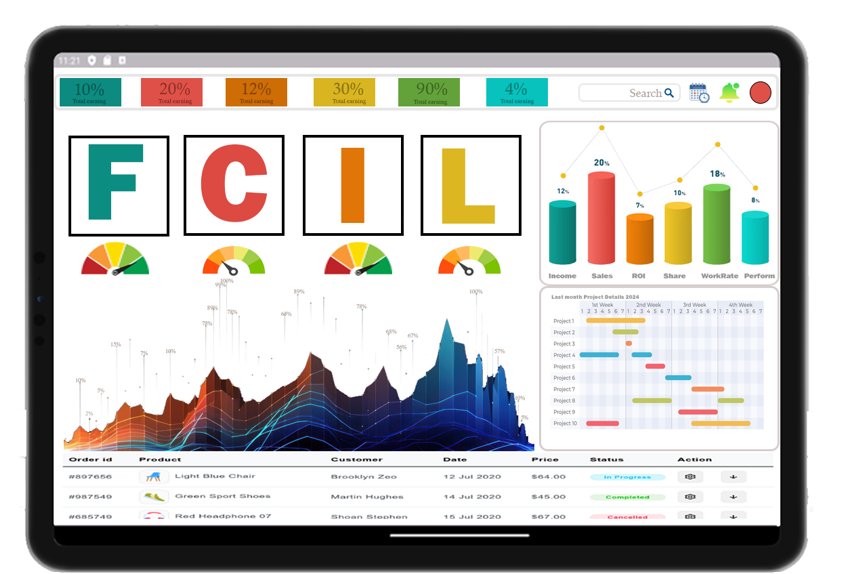What is a Balanced Scorecard?
The Balanced Scorecard (BSC) is a strategic management framework that organizations use to translate their vision and strategy into a coherent set of performance measures. Introduced by Robert Kaplan and David Norton in the early 1990s, the Balanced Scorecard goes beyond traditional financial metrics by incorporating non-financial performance indicators that are crucial for long-term success. It serves as a bridge between strategic objectives and operational activities, ensuring that all levels of the organization are aligned with the overall goals.

The Balanced Scorecard is structured around four key perspectives:
- Financial Perspective: This perspective focuses on financial performance metrics such as revenue growth, profitability, return on investment (ROI), and cost management. While these measures are critical for any business, the Balanced Scorecard recognizes that financial metrics alone are not sufficient to drive long-term success.
- Customer Perspective: This dimension evaluates how well the organization is meeting customer needs and expectations. Key metrics might include customer satisfaction, customer retention, market share, and brand loyalty. By emphasizing customer-centric measures, organizations can better understand how their products and services are perceived in the market.
- Internal Processes Perspective: This perspective examines the efficiency and effectiveness of the organization's internal processes. It includes metrics related to operations, production cycles, supply chain management, and quality control. Streamlining these processes can lead to cost savings and improved product or service quality, which in turn positively impacts financial and customer outcomes.
- Learning and Growth Perspective: Often referred to as the "innovation and learning" perspective, this area focuses on the organization's ability to innovate, improve, and grow. It includes measures related to employee training and development, organizational culture, knowledge management, and technological advancements. By investing in learning and growth, organizations can build the capabilities needed to sustain competitive advantage.
How Does a Balanced Scorecard Drive Business Improvement?
The Balanced Scorecard drives business improvement by providing a comprehensive framework that aligns the entire organization with its strategic goals. Here’s how it contributes to enhancing business performance:
1. Holistic View of Performance
One of the most significant advantages of the Balanced Scorecard is its ability to provide a holistic view of organizational performance. By integrating financial and non-financial metrics, the Balanced Scorecard ensures that organizations are not overly focused on short-term financial outcomes at the expense of long-term sustainability. This comprehensive view allows decision-makers to see the bigger picture and make informed decisions that balance immediate needs with future growth.
2. Strategic Alignment
The Balanced Scorecard helps to ensure that all parts of the organization are working towards the same strategic objectives. By cascading the Balanced Scorecard down through the organization, each department, team, and individual can see how their work contributes to the overall goals. This alignment helps to break down silos and encourages collaboration across different functions, leading to more cohesive and efficient operations.
3. Focus on Key Drivers of Success
Traditional financial metrics often reflect past performance, but the Balanced Scorecard emphasizes the key drivers of future success. By focusing on customer satisfaction, internal processes, and learning and growth, organizations can identify and address the factors that will drive long-term success. For example, investing in employee training today can lead to better innovation and productivity in the future, which will eventually enhance financial performance.
4. Improved Decision-Making
The Balanced Scorecard supports better decision-making by providing a structured way to evaluate performance across multiple dimensions. Leaders can use the Balanced Scorecard to identify areas of strength and weakness, prioritize initiatives, and allocate resources more effectively. The ability to track progress against strategic goals also enables more proactive management, allowing organizations to respond quickly to changes in the internal and external environment.
5. Enhanced Communication and Accountability
By clearly articulating the organization’s strategic goals and how they will be measured, the Balanced Scorecard enhances communication and accountability. Employees at all levels understand what is expected of them and how their performance will be evaluated. This transparency fosters a culture of accountability, where everyone is aware of their role in achieving the organization's objectives and is motivated to contribute to its success.
6. Continuous Improvement
The Balanced Scorecard is not just a tool for tracking performance; it is also a catalyst for continuous improvement. By regularly reviewing and updating the Balanced Scorecard, organizations can ensure that their strategies remain relevant and responsive to changing conditions. The feedback loop created by the Balanced Scorecard allows organizations to learn from their experiences, make adjustments, and continuously improve their performance.
Conclusion
The Balanced Scorecard is a powerful tool for driving business improvement by providing a balanced, integrated approach to performance management. By focusing on both financial and non-financial metrics, the Balanced Scorecard ensures that organizations are not only profitable but also sustainable in the long term. It fosters strategic alignment, enhances decision-making, and promotes a culture of continuous improvement, making it an essential framework for any organization seeking to achieve and maintain competitive advantage.